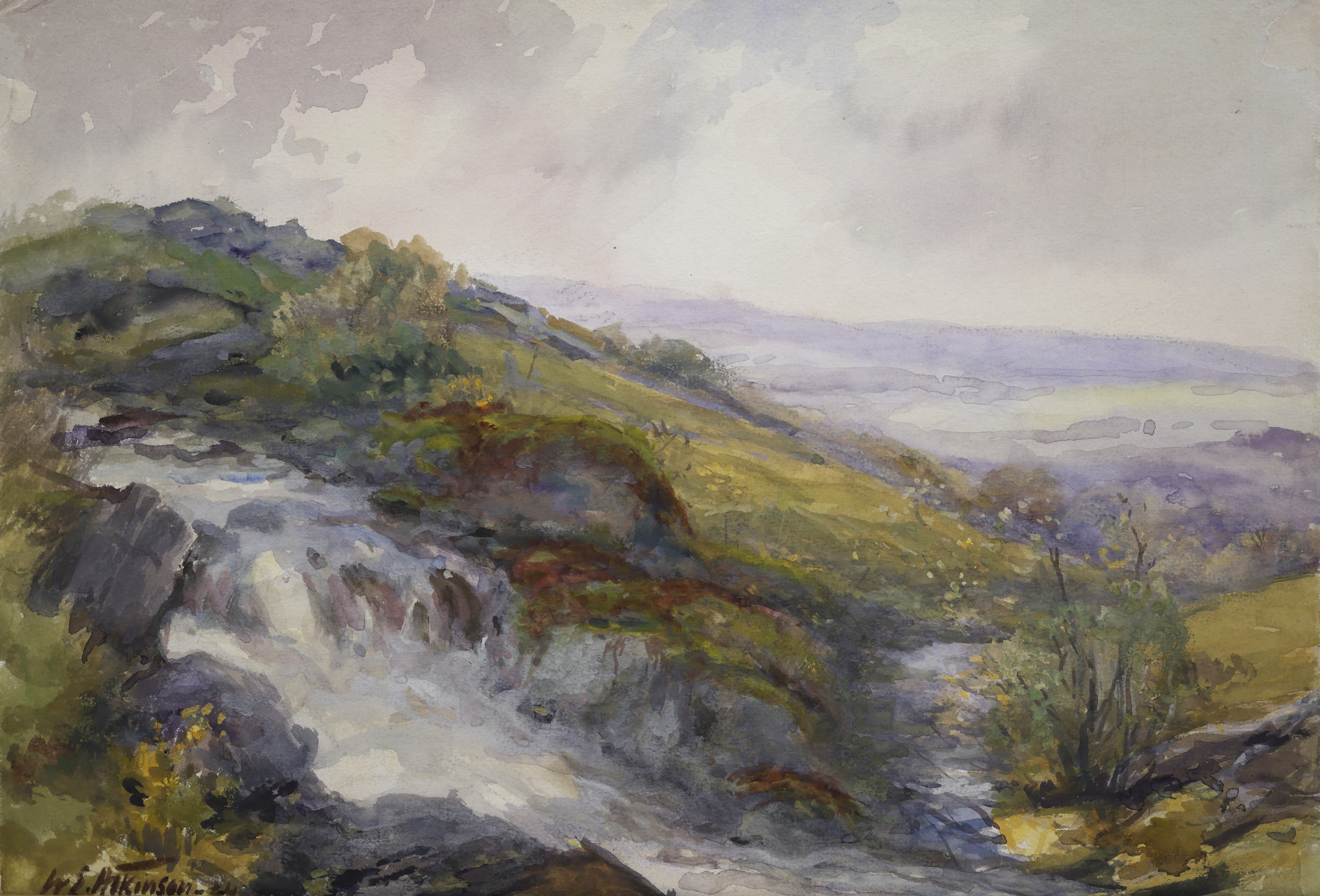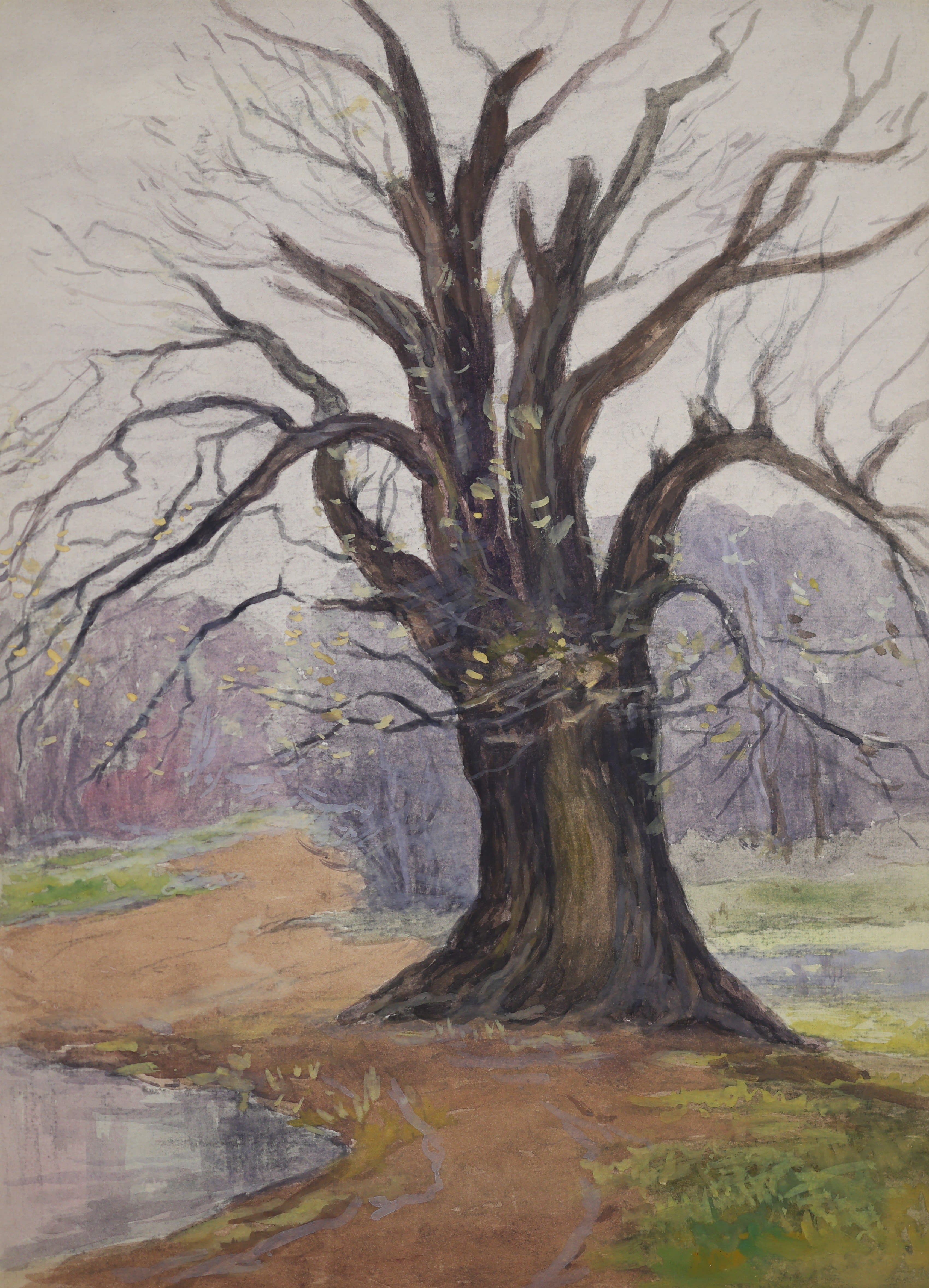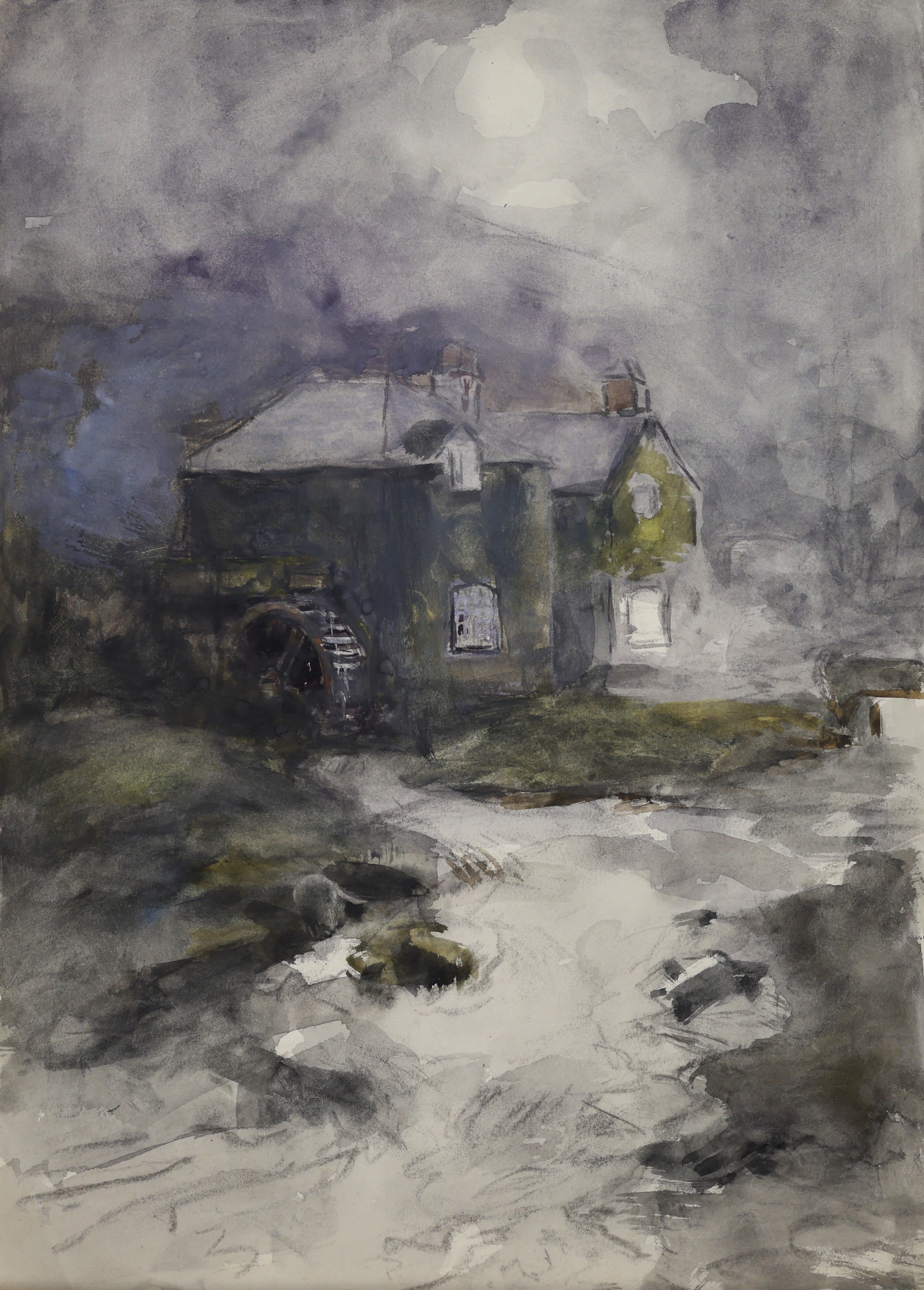William Edwin Atkinson (March 22, 1862-July 31, 1926) was a Canadian painter with a style that was characterized by a blend of realism and impressionism. He focused on the natural beauty of rural scenes and his skilful use of watercolour created a soft, atmospheric effect, often with a dreamlike quality.

William Edwin Atkinson; Old Cottage Near Oakhampton
As a teen, Atkinson was expected to follow in his father’s footprints as a pharmacist. While he initially pursued studies in chemistry at the University of Toronto, he later felt the irresistible call of art.
In 1881, Atkinson began his artistic education, enrolling at the Ontario School of Art. Here, under the tutelage of the esteemed Robert Harris, Atkinson laid the foundation for his artistic career. His thirst for knowledge led him to the Pennsylvania Academy from 1883 to 1884, where he had the privilege of studying under Thomas Eakins. During this period, he also shared lodgings with George Agnew Reid, an artistic association that would undoubtedly influence his artistic development.

William Edwin Atkinson; In the Coombe-Peter Tavy, Dartmoor, Devon
However, it was his sojourn in 1889 to the revered Académie Julian in Paris that truly expanded Atkinson's artistic horizons. It was in this bustling artistic hub that he had a fateful encounter with the legendary Paul Gauguin during a summer of painting in Pont-Aven. Gauguin, known for his vivid and innovative use of colour, offered Atkinson invaluable advice, encouraging him to employ stronger and more vibrant hues. This counsel left an indelible mark on Atkinson's artistic style, inspiring him to explore the expressive potential of colour in his own work.

William Edwin Atkinson; Tree Study
From Pont-Aven, Atkinson wrote letters home, describing his experiences, which were published in his hometown newspaper, The Vindicator. Following his time in Paris, Atkinson travelled extensively, spending time in Devon, England, and Holland, before returning to Canada and settling in Toronto. His paintings in Canada revealed that he never forgot what he had learned abroad, combining the influences of Impressionism, the Barbizon school, and the Hague school into his own unique style. The light in his work might be hazy, but the forms are luminous, and his use of colour, though muted, is brighter than that of his predecessors.

William Edwin Atkinson; Old Mill
Atkinson's work was considered progressive for the period, and as a result, he was made an associate member of the Royal Canadian Academy of Arts. In 1907, he was invited to be one of the founders of the Canadian Art Club in Toronto. His paintings are in the collection of prestigious institutions such as the National Gallery of Canada; the Government of Ontario Art Collection; the Robert McLaughlin Gallery, Oshawa; and the Art Gallery of Nova Scotia.






